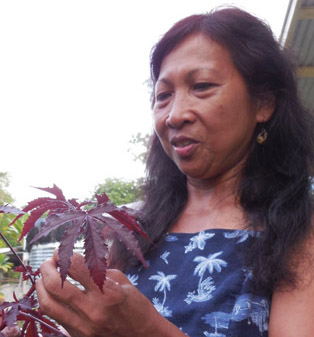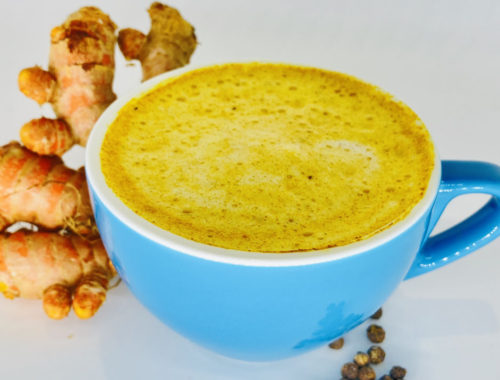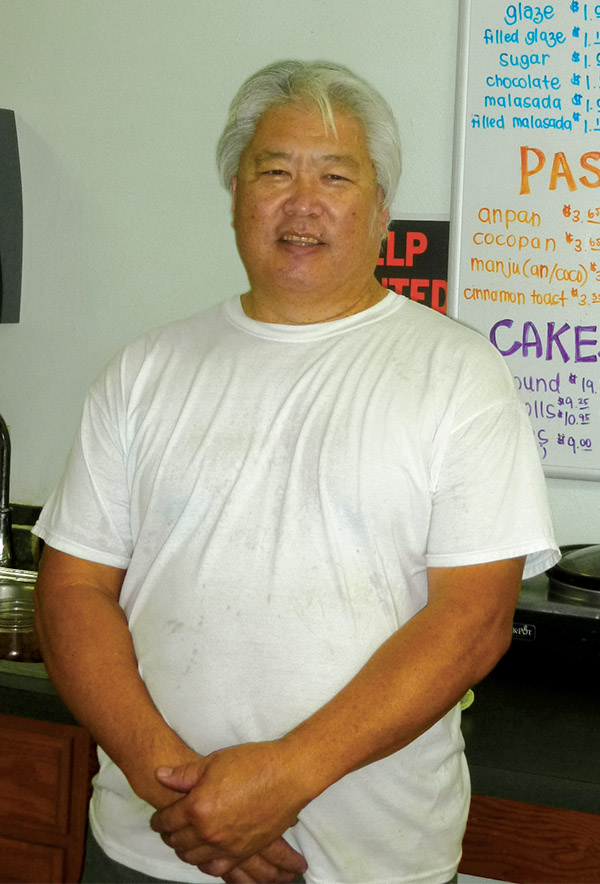Passionately Yours: Liliko‘i
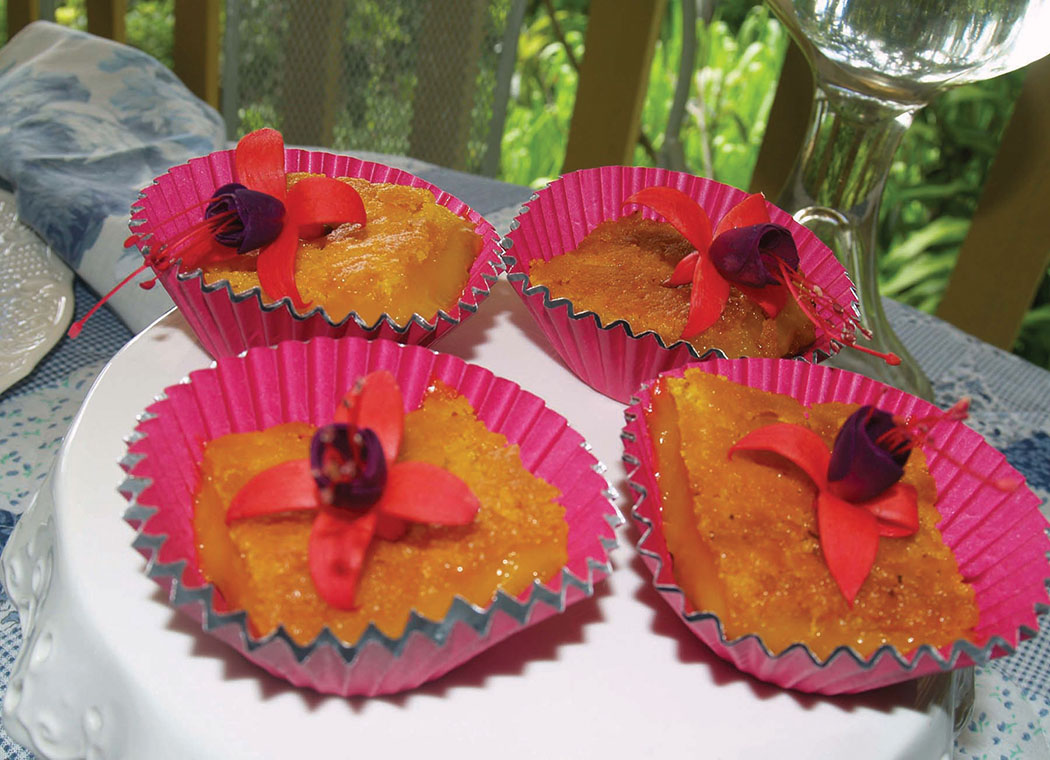
 By Sonia R. Martinez
By Sonia R. Martinez
There are many varieties of Passion Fruit (Passiflora edulis), or as we know it in the islands, liliko‘i. The most commonly used in Hawai‘i is the yellow fruit (flavicarpa).
A less common variety also seen in Hawai‘i is the giant granadilla, which can reach 12 inches in length and can weigh up to six pounds. The pulp of both the flavicapa and the granadilla may be eaten fresh or used in recipes. The granadilla may be eaten like a melon or mixed in fruit salads. If served chilled as a dessert, the pulp is improved when sprinkled with a bit of powdered coriander or lime juice.
Liliko‘i is a vine found cultivated or growing wild in Hawai‘i, usually between July and December, although sometimes until January or February. You can also purchase the juice or pulp year-round. The pulp can be sometimes found frozen, imported from South America where they call it maracuyá.
The smaller species have round to oval, tough and smooth-shelled 2-inch fruit that contain many seeds imbedded in a gelatinous, aromatic juicy pulp. Pungent and tart in flavor, this fruit can be eaten from the shell with a spoon. Some people prefer to add sugar.
There are many recipes using the liliko‘i juice or pulp—drinks, salad dressings, sauces, desserts, and as an ingredient in hundreds of dishes. Just think, any recipe that calls for lemons or limes could be made with the juice of liliko‘i!
Extracting the juice
There are several methods for extracting the juice; pressing the pulp, seeds and all, through cheesecloth or strainer or put the pulp, seeds and all in a blender and give it a little quick whirl, then pass through a sieve or strainer. Another way is to heat the pulp, which loosens the seeds. Then strain, cool, and refrigerate or freeze the pulp for later use after discarding the seeds.
Liliko‘i Syrup
An easy liliko‘i syrup can be made using equal amounts of juice and sugar. Bring to a boil, and then simmer until you reach the consistency desired. This syrup can be also used to flavor cream cheese cake icing by just mixing with equal amounts of cream cheese and sweet butter. An easy salad dressing can be made adding the syrup to white wine vinegar to make a vinaigrette.
The following recipe was shared with me by my Ke Ola Magazine editor, Renée Robinson. The original recipe came from her friend, Bettina Linke. Every March you can buy Bettina’s mochi at the bake sale at the Day at Hulihe‘e Fundraiser.
I am sharing the recipe as written by Bettina, then adding Renée’s changes and my little contribution.
Bettina Linke’s Butter Mochi
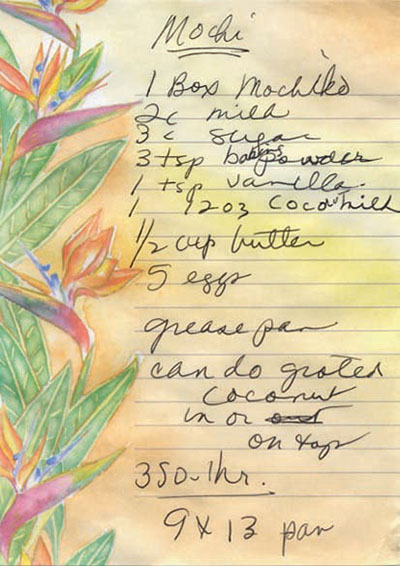 1 box Mochiko (sweet rice flour)
1 box Mochiko (sweet rice flour)
2 cups milk
3 cups sugar
3 teaspoons baking powder
1 teaspoon vanilla extract
1 12-ounce can coconut milk
½ cup butter
5 eggs
Preheat oven to 350° F.
Melt butter and beat the eggs. In a large bowl, mix rice flour, milk, sugar, baking powder, vanilla, coconut milk, melted butter and beaten eggs. Shredded coconut can be mixed in or sprinkled on top.
Pour into greased 9 x 13 baking pan and bake for 1 hour.
Liliko‘i Mochi — Editor Renée’s modifications
2 cups liliko‘i juice instead of the milk
Do not add the shredded coconut
Sonia’s modifications
I added a couple of drops of yellow and red food coloring to resemble the color of the pulp.
It took about four dozen liliko‘i to make 2 cups juice.
• • •
After extracting the two cups of juice, I put the seeds in a non-reactive saucepan with 1 cup water and 1 cup sugar, brought the mixture to a boil, then turned down to low and simmered for about 30 minutes. The resulting liquid will be used as syrup and/or to make vinaigrette.
The shells went into the compost pile.
So nothing goes to waste.
My mochi came out stickier than both Renée’s and Bettina’s. We’re wondering why. Is it affected by humidity?
I’d love to hear how yours turns out. ❖
2nd Annual Lilikoi Festival, October 25, 2014, 10am to 2pm, Nani Maui Gardens in Hilo: Facebook.com/LilikoiFestival
Contact writer Sonia R. Martinez: cubanwahine@hawaii.rr.com
